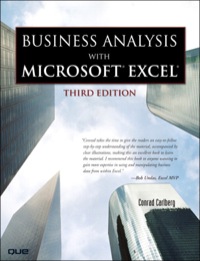Question
In December 1992, Michael Eisner and Frank Wells of Walt Disney exercised a large number of stock options. The facts are summarized here: Options Granted
In December 1992, Michael Eisner and Frank Wells of Walt Disney exercised a large number of stock options. The facts are summarized here:
Options Granted Previously Exercised Exercised 11/30/92 Grant Date Expiration Date Exercise Price
Eisner 8.6m 3.16 m 5.00m* 1984 1994 $3.59
6.00m 1989 1999 $17.14
2.00m 1989 1999 $19.64
Wells 7.36m 5.72, 1.64m** 1984 1994 $3.59
2.25m 1989 1999 $17.14
.75m 1989 1999 $19.64
*In 1984, Michael Eisner became chairman of Walt Disney and Frank Wells became president. In late 1992, the optons originally granted in 1984 were exercised when the stock price was $40 per share. Both Eisner and Wells were subject to the top marginal tax rate in 1992, which was 31%. Assume that both had salaries in excess of $1 million.
*In late 1992 there was a high probability that President Clinton's tax act would be passed, effective for 1993, and that the top tax rate for individuals would increase to $39.6, the corporate rate would increase to 35%, and deductions for executive compensation in excess of $1 million would be disallowed.
A. Ignoring present-value considerations, how much did Eisner and Wells together personally save in taxes by exercising their options in 1992 instead of waiting until 1993 or 1994?
B. Michael Eisner exercised 5 million options and immediately sold 3,450,000 of the shares. What were the cash flow consequences to Eisner of these two transactions, including taxes?
C. Eisner told the Wall Street Journal he had to exercise the options in 1992 to avoid Disney incurring a substantial additional tax liability. Consider the claim that the early exercise saved Disney shareholders roughly $90 million in corporate income taxes. Assume that the corporation could not deduct any compensation paid in 1993 over $1 million.
D. Recompute your answer to c using the actual law as enacted, which has two provisions relevant for this problem. The first is that the $1 million disallowance did not take effect until 1994. The second is that transitional rules would have grandfathered these options and made the expenses fully deductible.
E. If early exercises was such a good deal for Disney, why didn't Eisner and Wells exercise all their options instead of just the options granted in 1984?
Step by Step Solution
There are 3 Steps involved in it
Step: 1

Get Instant Access to Expert-Tailored Solutions
See step-by-step solutions with expert insights and AI powered tools for academic success
Step: 2

Step: 3

Ace Your Homework with AI
Get the answers you need in no time with our AI-driven, step-by-step assistance
Get Started


